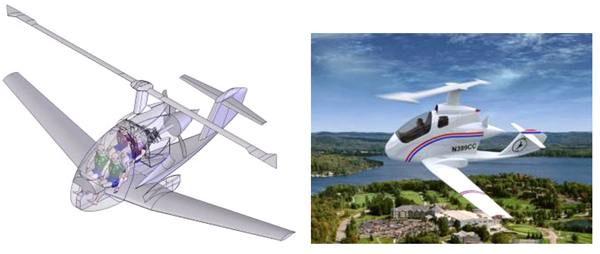Orthographic drawings provide a way of creating three-dimensional objects using two-dimensional space and points of view. Once a three-dimensional object is constructed using the orthographic perspectives and drawn, it will show three sides of the object. This type of drawing is known as an isometric representation.
![]() Watch the Science Expo video about orthographic projections and how they are used.
Watch the Science Expo video about orthographic projections and how they are used.
Source: Science Expo Orthographic View, ParkerScience, YouTube
An isometric view of a three-dimensional object uses an angled view, usually a 60° angle, to show the depth of an object on a flat screen or piece of paper.
The orthographic views below show the front view, top view, and side view of a helicopter.

Source Statement: Isometric Drawing Tool, National Council for Teachers of Mathematics, Illuminations
to reveal the isometric view of the object.

Source: (left) Isometric View of Helicopter, Carter Copters; (right) Helicopter, Mat Recardo, Carter Copters

In fact, the use of orthographic and isometric views together is quite common in model design, art, and architecture.
In this lesson, you will practice generating orthographic and isometric views from three-dimensional objects. You will also practice identifying the object when given isometric or orthographic views. Additionally, you will investigate different ways you can generate isometric views from orthographic views and orthographic views from isometric views.